Sustainable packaging refers to the development and use of packaging solutions that have minimal environmental impact. The importance of sustainable packaging lies in its ability to reduce waste, conserve resources, and minimize pollution—making it crucial for protecting our planet and staying competitive in the current ecommerce landscape.
Businesses can enhance their brand image and appeal to eco-conscious consumers by using sustainable packaging ideas ranging from increased recycled content to innovative, biodegradable materials.
These sustainable packaging ideas and materials are providing new options for businesses:
1. Minimal Packaging
Embracing minimalism in packaging means reducing materials to the essentials, focusing on efficiency and simplicity. This approach not only lessens waste and environmental impact but also aligns with consumer preferences for transparency and authenticity.
Brands that adopt minimal packaging strategies often see benefits such as cost reductions, increased product visibility, and enhanced brand image.
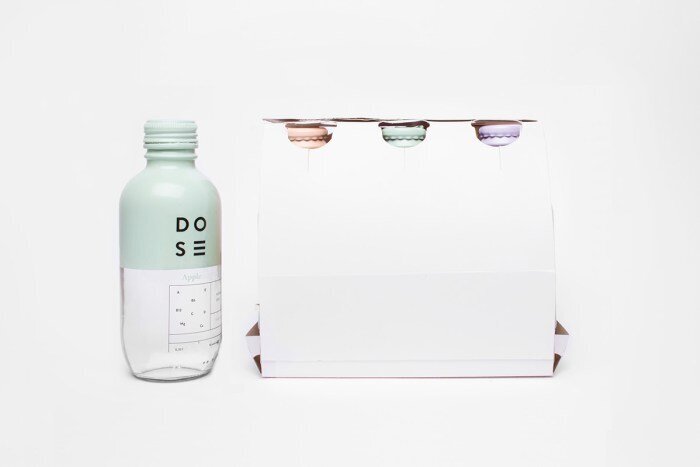
This sustainable packaging design minimizes not only common materials but also inks, which can leak into groundwater and cause environmental and biological damage. (Source: Millcreek Creative)
2. Recycled Packaging
Recycled materials play a key role in sustainable packaging, incorporating post-consumer or post-industrial content to conserve resources and divert waste from landfills. High-quality, recycled packaging materials are now more accessible than ever, offering businesses a way to contribute positively to the environment and keep up with current retail sustainability trends.
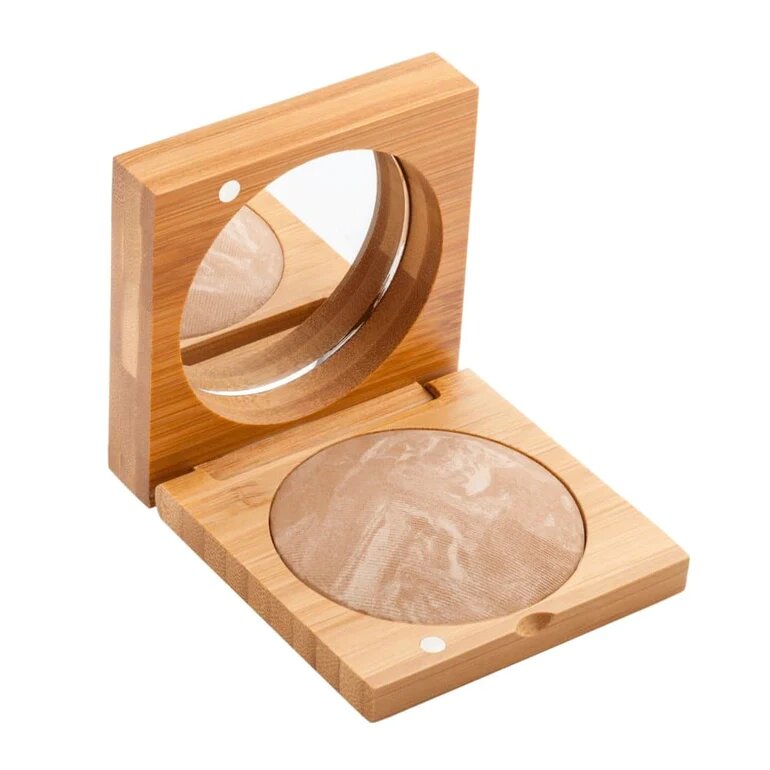
Antonym Cosmetics uses packaging made of sustainable bamboo paired with recycled materials to create eco-friendly and aesthetic products. (Source: Antonym Cosmetics)
3. Reusable Packaging
Reusable packaging extends the lifecycle of packaging materials and offers a solution to single-use culture. Businesses can offer product refills intended to replenish their original containers, allowing customers to keep using the same packaging repeatedly. This approach not only reduces waste but also builds a loyal customer base and encourages repeat purchases.
Alternatively, businesses can use packaging intended to be repurposed by the customer for their own uses, such as storage containers, plant pots, or creative craft materials.
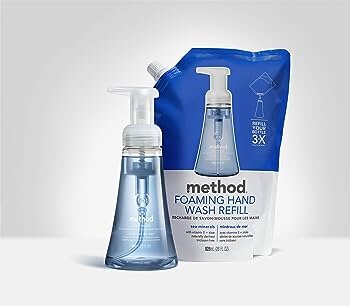
Method hand soap comes in a durable container that customers can replenish with minimally packaged refills, helping reduce plastic waste. (Source: Amazon)
4. Biodegradable Packaging
Biodegradable packaging represents a leap forward in reducing the environmental impact of disposables. By breaking down into natural components under the right conditions, these materials leave minimal traces in the environment.
This category is gaining traction for its potential to reduce pollution and landfill waste, particularly in sectors where disposable packaging is prevalent. However, it’s important to note that there’s a difference between materials that work with ‘home compost’ and “industrial compost,” so finding the right packaging for consumer use is key.
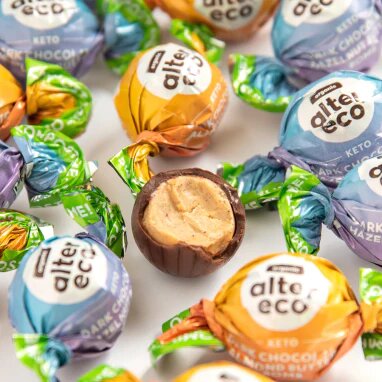
Chocolatier Alter Eco developed a fully compostable truffle wrapper made from wood pulp and non-toxic ink. (Source: Alter Eco)
5. Sustainable Dunnage
Cushioning’s lightweight nature and importance in protecting products during shipping make it a prime area for innovation in sustainable materials. For example, many of today’s air pillows reflect the industry’s pivot towards more sustainable practices, incorporating recycled or recyclable content and a greater volume of air to lessen their environmental impact.
Corrugated cardboard also offers excellent recyclability, strength, and adaptability, allowing for creative packaging solutions that reduce waste while ensuring product safety.
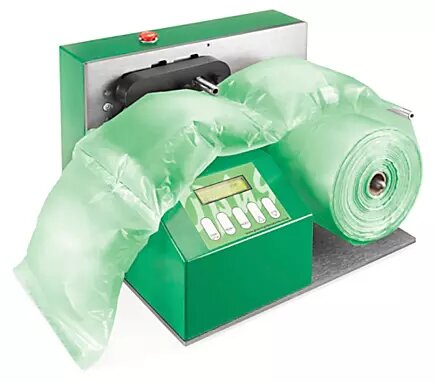
Packaging companies like Uline offer eco-friendly air pillows that are accessible and affordable for small businesses. (Source: Uline)
6. Furoshiki Cloth Wrapping
The art of Furoshiki is gaining popularity in worldwide ecommerce, blending functionality, beauty, and environmental consciousness. Originating from Japan, this age-old practice of cloth wrapping presents an elegantly simple yet highly sustainable alternative to traditional packaging options.
Furoshiki involves using a single piece of fabric in various folds and knots to wrap and carry goods, making it an adaptable solution for a broad range of packaging needs. This method not only significantly reduces waste associated with disposable packaging but also contributes to branding and adds a personal touch to the presentation of products. These cloth packages can also be reused by consumers, especially when the order is accompanied by a guide to help them make their own Furoshiki wraps.

Furoshiki cloth wrapping can be adapted to packages of nearly any shape, providing an attractive and sustainable packaging idea. (Source: Clever Octopus)
7. Plantable Packaging
Plantable packaging uses biodegradable materials embedded with seeds, turning packaging into a potential source of greenery. Instead of contributing to landfill mass, the packaging serves a secondary purpose by promoting the growth of plants when disposed of.
This sustainable packaging idea not only reduces waste but also actively engages consumers in sustainability efforts. It helps to enhance businesses’ eco-friendliness and foster a deeper connection between shoppers, the environment, and their brand.
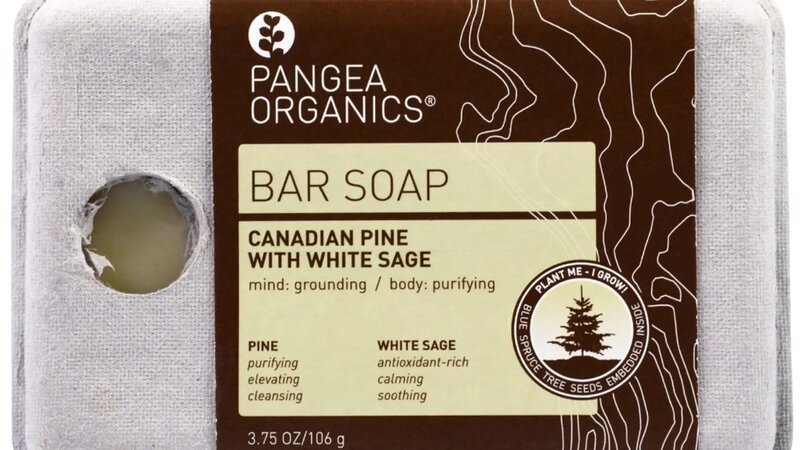
Pangea Organics boxes its soap in packaging infused with spruce tree seeds. (Source: DieLine)
8. Edible Packaging
One radical shift towards zero-waste consumption is using packaging that consumers can eat. This approach not only eliminates waste at its source but also provides an engaging, novel, and memorable experience for customers.
Restaurants and retailers using edible packaging often receive significant attention from consumers and media alike, helping boost visibility and brand image, as well as enhancing their sustainability efforts.
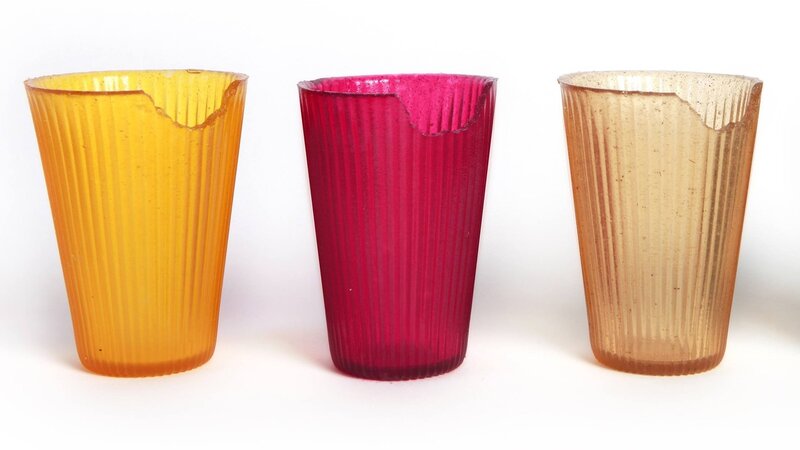
Loliware produces edible cups and straws made from seaweed, mineral colors, and natural additives, and has partnered with Jose Andres Group restaurants. (Source: The Daily Meal)
9. Bioplastics
Bioplastics are a big innovation in sustainable packaging ideas. Made from renewable resources, they significantly reduce the environmental impact compared to petroleum-based plastics.
The potential for biodegradability can lessen waste in landfills and plastic pollution. The production of bioplastics also typically requires less energy and emits fewer greenhouse gasses, supporting efforts to mitigate climate change. Using bioplastics allows businesses to cater to eco-conscious consumers, enhancing brand reputation. However, their effective disposal requires industrial composting facilities, requiring proper ware management to maximize their environmental benefits.
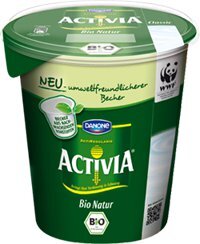
Danone uses PLA, a plastic derived from plants rather than petroleum, in its yogurt packaging. (Source: Packaging Digest)
Implementing Sustainable Packaging in Your Business
Embracing sustainable packaging ideas goes deeper than environmental benefits; it’s a strategic business move that can enhance brand image, meet consumer demand for eco-friendly practices, and potentially reduce costs. Transitioning to sustainable packaging requires careful planning and execution. Here’s a step-by-step guide to get started:
Step 1: Assess Your Current Packaging. Begin by evaluating your existing packaging to identify areas for improvement. Consider the materials, design, and lifecycle of your packaging to pinpoint opportunities to reduce waste and increase recyclability.
Step 2: Set Clear Objectives. Define what you aim to achieve with sustainable packaging. Objectives may include reducing plastic use, increasing content recyclability, or minimizing packaging size. Consider specific consumer demand and current retail trends in your industry to guide your strategy.
Step 3: Research Sustainable Materials. Explore eco-friendly packaging options that work with your products, budget, and operational needs. Explore potential costs, sourcing options, and how new packaging would fit into your order fulfillment strategy.
Step 4: Engage Suppliers and Manufacturers. Partner with packaging suppliers and manufacturers who specialize in sustainable materials and practices. Their expertise can help you navigate the complexities of eco-friendly packaging.
Step 5: Pilot Your New Packaging. Test your new packaging on a small scale to gather feedback and make adjustments before a full rollout. This step can help you identify unforeseen challenges and consumer reception.
Step 6: Educate Your Customers. Communicate the benefits and proper disposal methods of your new packaging to your customers. Education is key to ensuring that the environmental benefits of eco-friendly packaging are realized and communicating your brand’s commitment to sustainability.
Frequently Asked Questions (FAQs)
Here are some questions we often encounter about sustainable packaging. Learn more by clicking through each below.
Switching to sustainable packaging can help reduce your environmental impact, meet consumer demand for eco-friendly practices, potentially lower shipping and material costs, and improve your brand image and competitive edge in the marketplace.
Initially, sustainable packaging can be more expensive than conventional alternatives. However, costs can be offset over time through efficiency gains, reduced waste disposal fees, and increased sales from consumers preferring eco-friendly products.
Common sustainable packaging materials include recycled or recyclable paper and cardboard, reusable containers, and bioplastics made from plant-based materials.
Bottom Line
Using sustainable packaging is a step towards lessening your business’ environmental impact and attracting eco-conscious consumers. Sustainable packaging ideas range from highly innovative, advanced options to simple and effective minimal designs, making them accessible for retail and ecommerce businesses of all sizes.
As consumer demand for sustainability and the need for eco-friendly practices increases, sustainable packaging becomes not just a trend but a fundamental shift in how businesses approach product presentation and environmental responsibility.